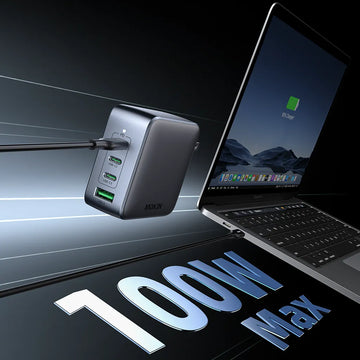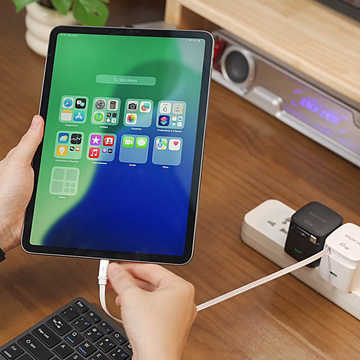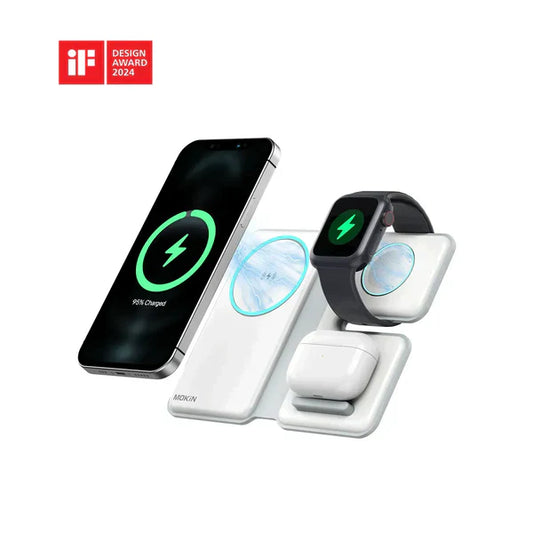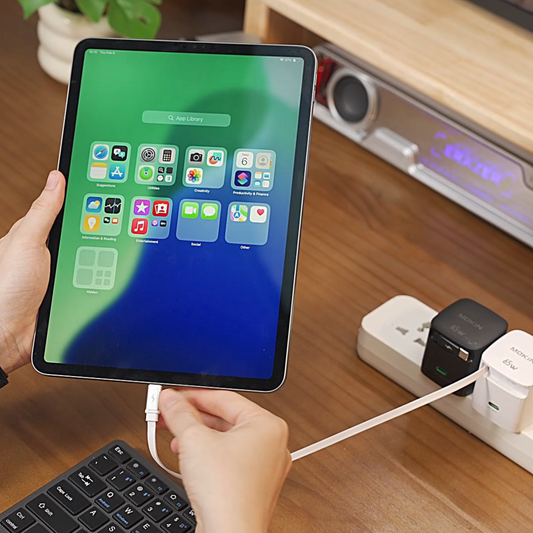Decode the Mystery: Why Your Phone Charges Sluggishly and How to Turbocharge It
In today's hyper - connected world, our smartphones are an extension of ourselves. They keep us informed, entertained, and connected. But there's nothing more frustrating than when your phone charges at a glacial pace. Is it a sign of a major problem, or can it be easily fixed? Let's dive deep into the world of smartphone charging to find out.

The Basics of Smartphone Charging
——————————
Before we explore the reasons behind slow charging, it's essential to understand how smartphones charge. Smartphones use lithium - ion batteries, which rely on the movement of lithium ions between the anode and cathode during charging and discharging. When you plug your phone into a charger, an electrical current flows through the charging cable and into the battery, causing the lithium ions to move from the cathode to the anode, storing energy.
Reasons for Slow Charging
——————————
1. Charger and Cable Issues
● Incompatible Chargers: Not all chargers are created equal. Using a charger that is not designed for your specific phone model can lead to slow charging. For example, if your phone supports fast charging at 18W or higher, but you're using a 5W charger, the charging time will be significantly longer. Chargers with lower wattage output simply cannot provide the necessary power to charge your phone quickly.

● Faulty Cables: Charging cables can wear out over time. The internal wires may break or become frayed, even if the outer insulation looks intact. A damaged cable can cause resistance in the electrical current, reducing the amount of power that reaches your phone. Additionally, cheap or knock - off cables may not be able to handle the high - current demands of fast charging, leading to slow charging or even damage to your device.

2. Battery - Related Problems
● Battery Degradation: Lithium - ion batteries have a limited lifespan. Over time, with repeated charging and discharging cycles, the battery's capacity and performance start to decline. This degradation can cause the battery to charge more slowly. If your phone is a few years old, it's likely that the battery has lost some of its ability to hold a charge efficiently. For example, a battery that originally took 1.5 hours to fully charge may now take 3 hours or more due to degradation.
● Overheating: Batteries are sensitive to temperature. Charging your phone in a hot environment, such as in direct sunlight or inside a hot car, can cause the battery to heat up. Most smartphones are designed with safety features that slow down the charging process when the battery temperature rises too high. This is to prevent overheating, which can damage the battery and pose a safety risk.

3. Software - Side Hurdles
● Background Apps: Running multiple apps in the background can consume a significant amount of power. When your phone is charging, these apps continue to draw energy, effectively reducing the amount of power available for charging the battery. For instance, apps that are constantly syncing data, streaming content, or using location services can slow down the charging process.
● Outdated Software: Sometimes, an outdated operating system or app can cause charging issues. Software bugs or glitches may interfere with the phone's charging algorithm. For example, an old version of an app may not be optimized to work with the latest charging technology, leading to inefficiencies in the charging process.
4. Hardware - Level Hiccups
● Charging Port Problems: The charging port on your phone can get dirty or damaged. Dust, lint, or debris can accumulate in the port, preventing a proper connection between the charger and the phone. A bent or damaged charging port pin can also disrupt the flow of electricity, resulting in slow or intermittent charging.

● Motherboard Issues: In rare cases, there may be a problem with the phone's motherboard. A malfunctioning motherboard can affect the charging circuit, leading to slow charging. This is a more serious issue that usually requires professional repair.
Solutions to Turbocharge Your Phone's Charging
——————————
1. Optimize Charging Equipment
● Use the Right Charger: Always use the charger that came with your phone or a charger that is specifically designed for your model and supports its fast - charging capabilities. If you've lost the original charger, look for chargers from reputable brands that are certified to work with your phone. For example, if your phone supports Qualcomm Quick Charge technology, choose a charger that is compatible with this standard.
● Replace Faulty Cables: Inspect your charging cable regularly for any signs of damage. If you notice fraying, cuts, or if the cable feels loose when plugged in, it's time to replace it. Opt for high - quality cables that are thick enough to handle the current required for fast charging. Some cables even come with additional shielding to reduce interference and improve charging efficiency.
2. Manage Battery Health
● Avoid Overcharging: Do not leave your phone plugged in for extended periods after it has reached 100% charge. Overcharging can cause the battery to overheat and degrade over time. Most modern smartphones have built - in charging management systems, but it's still a good practice to unplug your phone once it's fully charged.

● Keep Your Phone Cool: Try to charge your phone in a cool, well - ventilated area. Avoid charging it in direct sunlight or in a hot environment. If your phone gets hot while charging, you can try using a cooling pad or simply remove any protective cases that may be trapping heat.
3. Software - Side Fixes
● Close Background Apps: Before charging your phone, close any unnecessary apps running in the background. On most smartphones, you can do this by swiping up from the bottom of the screen (on Android) or double - clicking the home button (on iPhone) and then swiping up on each app preview to close it. This will free up power and allow the battery to charge more quickly.

● Update Software Regularly: Make sure your phone's operating system and apps are up - to - date. Software updates often include bug fixes, performance improvements, and optimizations for charging. Set your phone to automatically update apps and enable automatic system updates (if available) to ensure you're always running the latest and most efficient software.
4. Hardware Checks
● Clean the Charging Port: Use a small, clean brush, such as a toothbrush, to gently clean the charging port on your phone. Be careful not to damage the port or any of the pins. You can also use compressed air to blow out any dust or debris. If the charging port is severely damaged, you may need to take your phone to a professional repair shop for replacement.
● Seek Professional Help for Motherboard Issues: If you suspect a motherboard problem, it's best to take your phone to an authorized service center or a professional repair technician. They have the tools and expertise to diagnose and fix motherboard - related charging issues.
YOU MAY ALSO LIKE
——————————
Using Your Multi-Port Charger Correctly: Tips to Avoid Power Distribution Issues!

MOKiN 13-IN-1 USB-C Laptop Charging Station with 2.26-inch LCD Smart Display








